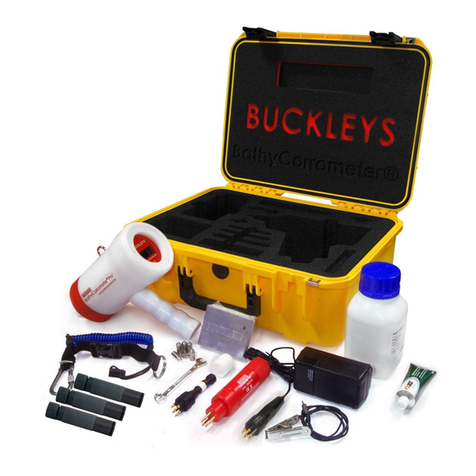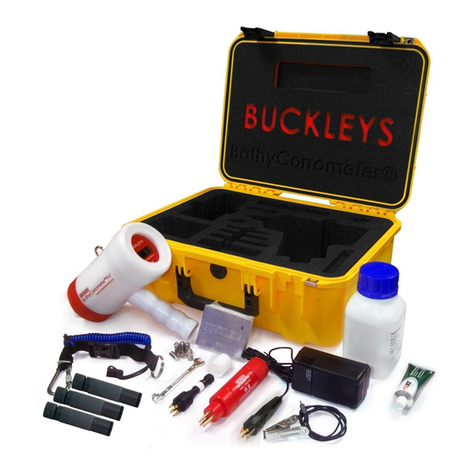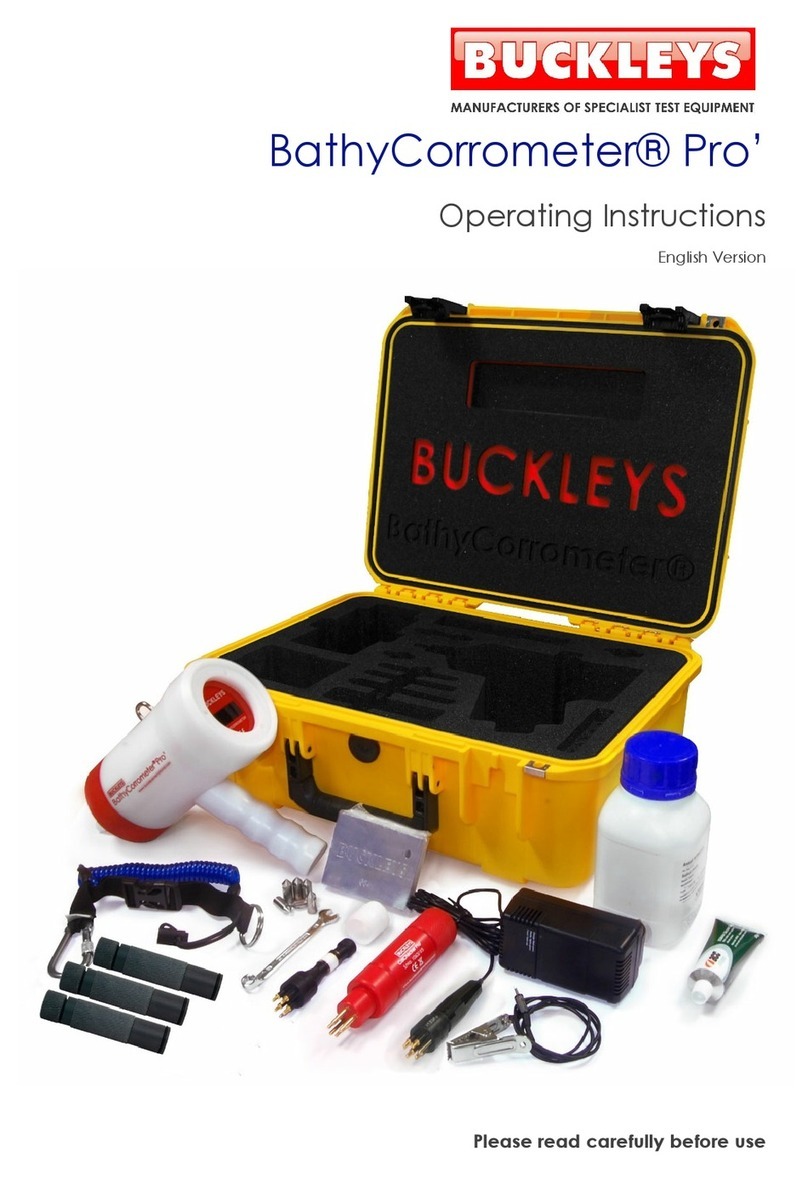
Instruction Manual
4
Operation
i. If the half-cell is new or has not been used for a long time it should be
soaked in a plastic bucket of clean seawater for about 2 hours.
ii. It may need longer if the half-cell is very dry.
iii. Turn on the multimeter and check that the battery is OK, see instruction
supplied with meter.
iv. Connect the black lead to the cable spool and to the terminal marked
v. Com (- terminal) on the multimeter.
vi. Connect the red lead with the crocodile clip to the terminal marked ‘V’
vii. (+ terminal) on the multimeter.
viii. Switch the multimeter to the 2 volt (2000mV) DC range (see instructions
supplied with meter).
ix. With the half-cell still in the bucket of seawater put just the tip of the
crocodile clip into the water. The reading on the multimeter should change
from 0.000V to about -0.600V. This shows that the half-cell and multimeter
are working and that the leads are connected correctly.
x. Decide where on the structure the readings are to be taken.
xi. For consistency the reading should be taken in the same place at the same
state of the tide, if applicable, and at the same depth.
xii. This will allow changes to be readily spotted. Always consult a corrosion
engineer to interpret the results.
Surveying
Decide where on the structure the readings are to be taken. For consistency
the reading should be taken in the same place at the same state of the tide, if
applicable, and at the same depth. This will allow changes to be readily
spotted. Always consult a corrosion engineer to interpret the results.
i. Lower the half-cell into the water to the required depth.
ii. Connect the crocodile clip to the structure making sure there is a good
connection.
iii. Switch the multimeter to the 2 volt (2000mV) DC range and the corrosion
potential will be displayed.
iv. Record the location, reading and any other information required. v.
Retrieve the half-cell and disconnect the crocodile clip.
v. Move to the next location and proceed from step 1 again until all the




























